There are many, many ways to make orange marmalade. If you go looking, you’ll find a plethora of resources with precise techniques and proper methods.
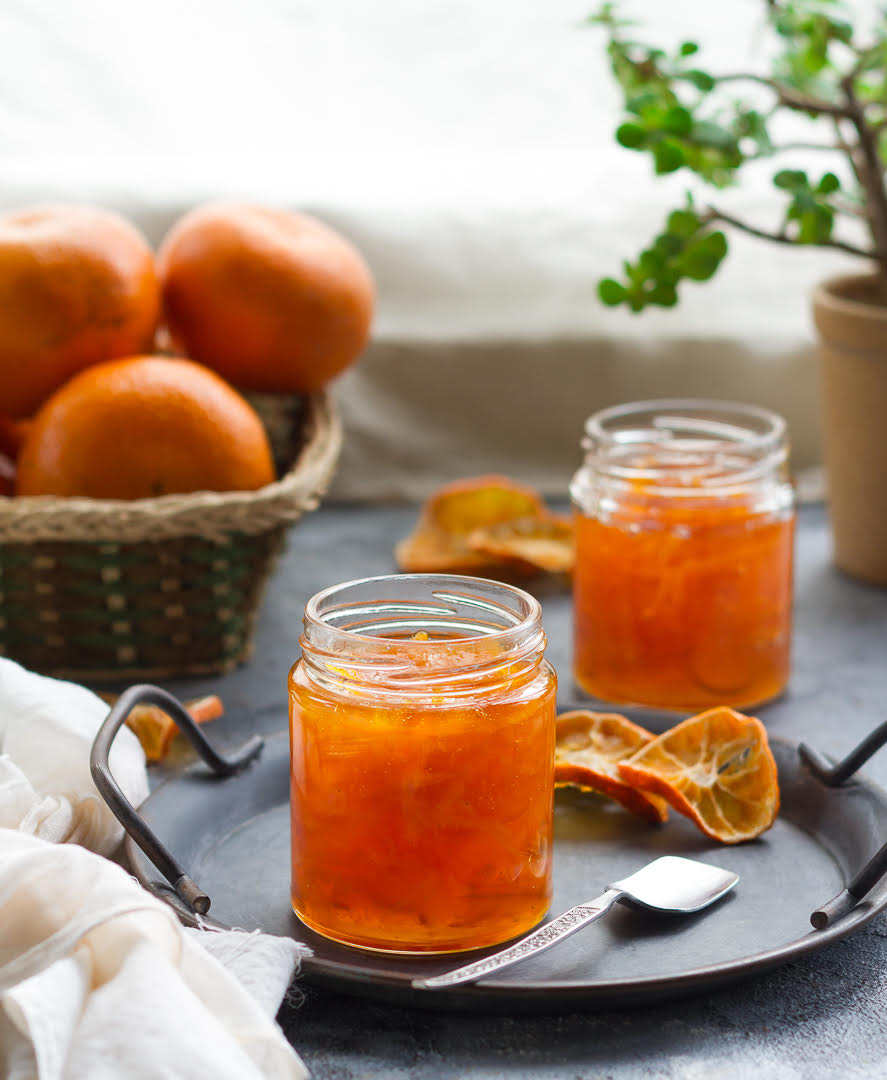
My recipe is an easy one. Something even beginners can try their hand at.
I call it an alchemical miracle filling the house with a divine, zesty scent. Nothing compares to the gorgeous aroma of homemade marmalade wafting from the pot.
Jump to:
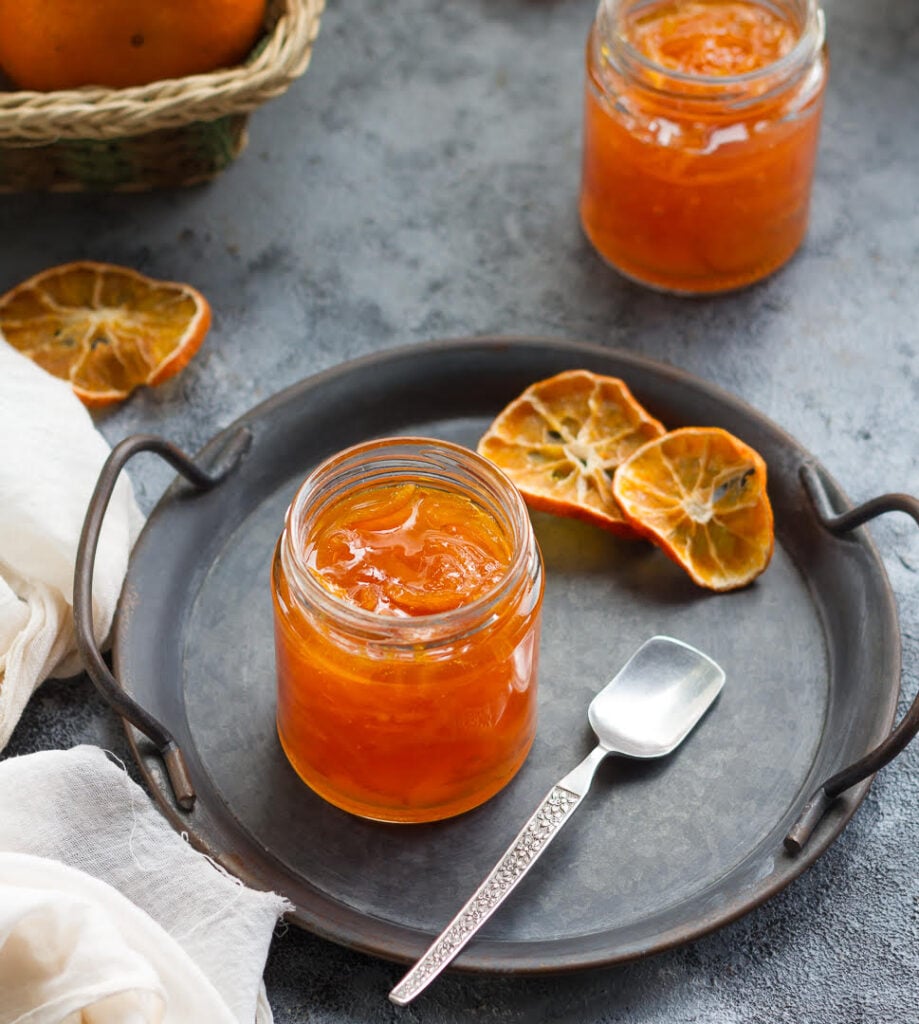
What is marmalade, and how is it different from jam?
Marmalade and jam are like cousins. Belonging to the same family, yet different. Both are made by mixing sugar, water, and fruit. As it heats, the natural pectin in the fruit turns the juices into a jelly consistency.
What’s the difference then?
Marmalade uses the whole fruit, including the rind. Jam doesn’t. And it’s because of the rind that marmalade achieves the classic balance of sweet and bitter.
Jam and marmalade also vary in consistency. The suspended peel makes it chunkier than jam.
What orange to use to make marmalade?
The original marmalade recipe calls for Seville orange, a hybrid of mandarin orange. I didn’t have access to them, so I opted for the next best thing – Kinnow.
Kinnow is another mandarin hybrid - a mix of King and Willow Leaf orange - and juicier than oranges.
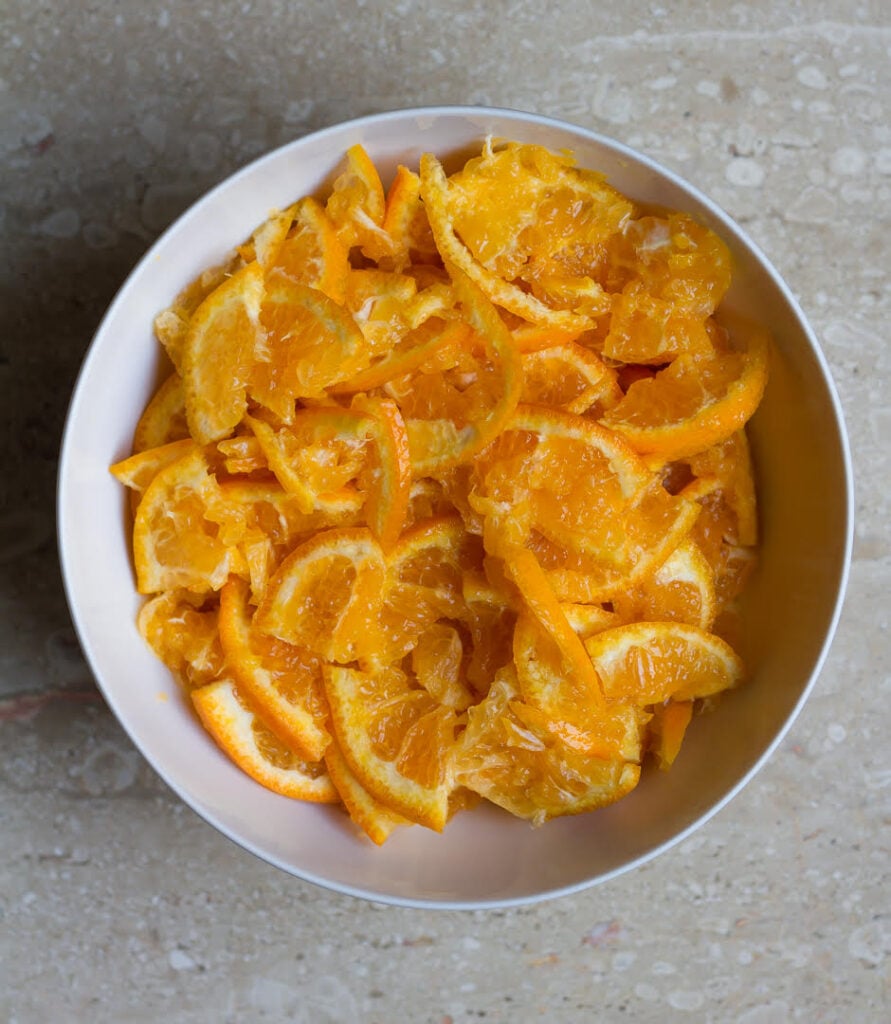
How to make orange marmalade?
As I said, this method of making marmalade is simple. It doesn’t require much effort, only for you to sit next to a pot of bubbling orange nectar and stir it once in a while.
- Start by slicing oranges thinly. Deseed them as you go along.
- Anywhere you see a thick pith, that’s the white layer under the peel, cut it out. The pith is bitter, and you don’t want too much of it in the marmalade.
- Quarter the orange slices. The shape doesn’t matter because it’s all going to be cooked anyway.
- In a pan, add water and sugar along with the oranges.
To create an extra sharp note, I added a teaspoon or two of freshly grated ginger at this point. But this is an optional step.
- Let it come to a simmer on medium heat.
- Switch to low heat and cook the mixture for about 30 to 40 minutes.
- Be around the bubbling pot. You’ll need to stir the pot occasionally; otherwise, the marmalade will burn from the bottom.
Fair warning, the sound of the jammy goodness simmering and the intense fragrance is so enticing that you won’t want to leave the kitchen.
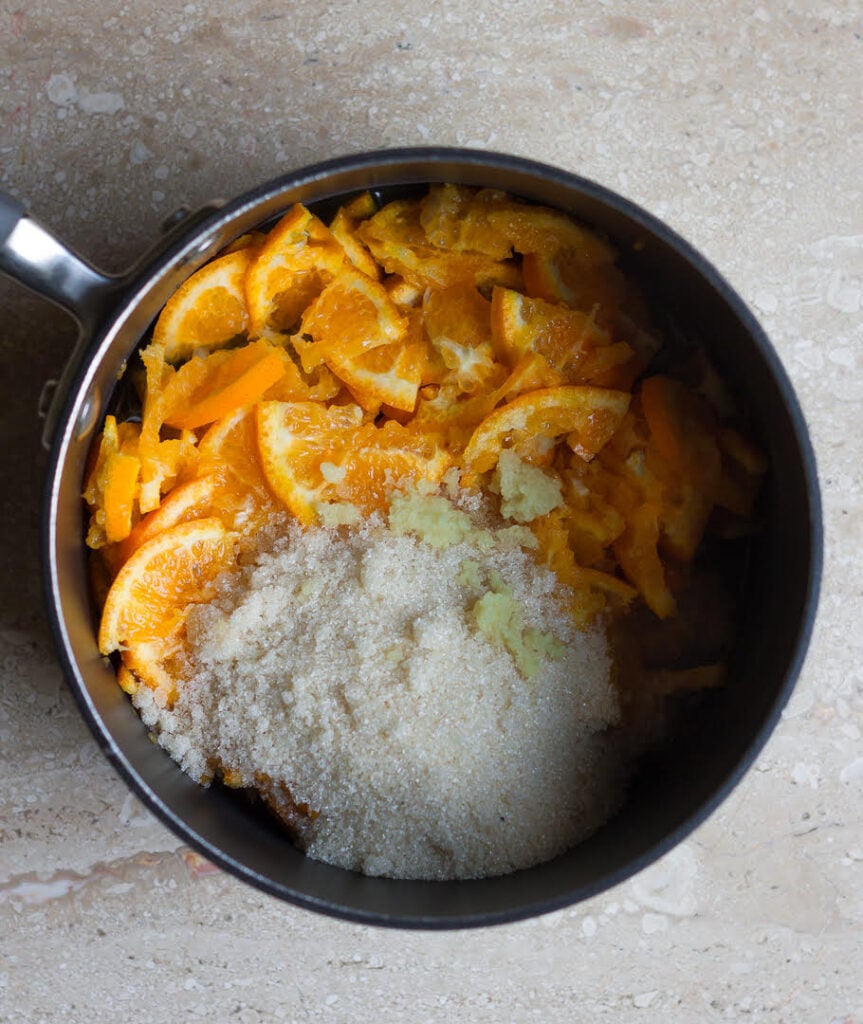
How do you know when the orange marmalade is ready?
Ready marmalade is gelatinous with a light texture from the soft, translucent rinds. You can test using a candy thermometer.
When the marmalade reaches 220°F or 104.4° Celsius, it’s ready to be poured into sterilized glass jars and stored for up to 3 weeks in the refrigerator.
Or you could do what I did – try the wrinkle test.
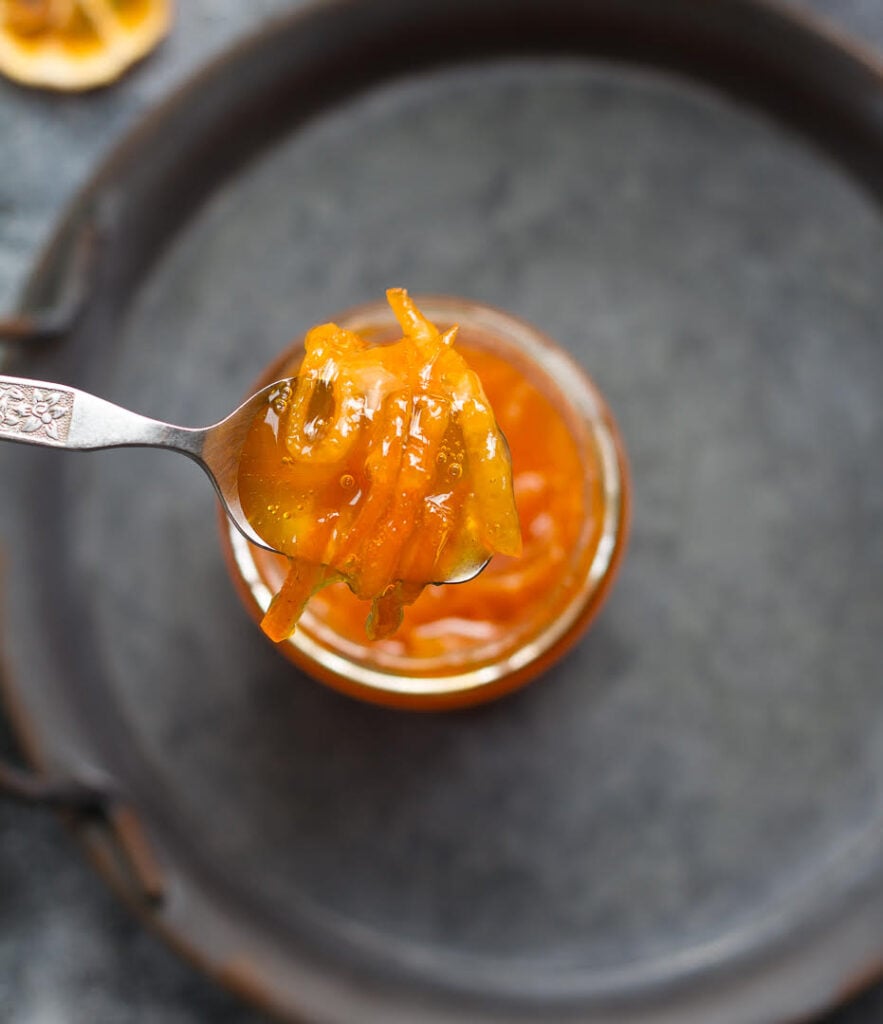
- Slide a plate in your freezer right before you start cooking the marmalade.
- When you feel the mixture has reached a gel-like consistency, take the plate out.
- Spoon a tiny amount onto the plate.
- Touch the surface of the conserve (or you can tilt the plate).
- If the marmalade wrinkles, it’s ready.
- If not, cook it some more.
Quick note:
Always turn off the heat when you are testing the readiness of marmalade. You do not want it to be overcooked even by a minute!
Also, you always want to err on the side of runny marmalade. An over-thick one is dry, rubbery, and hard to eat.
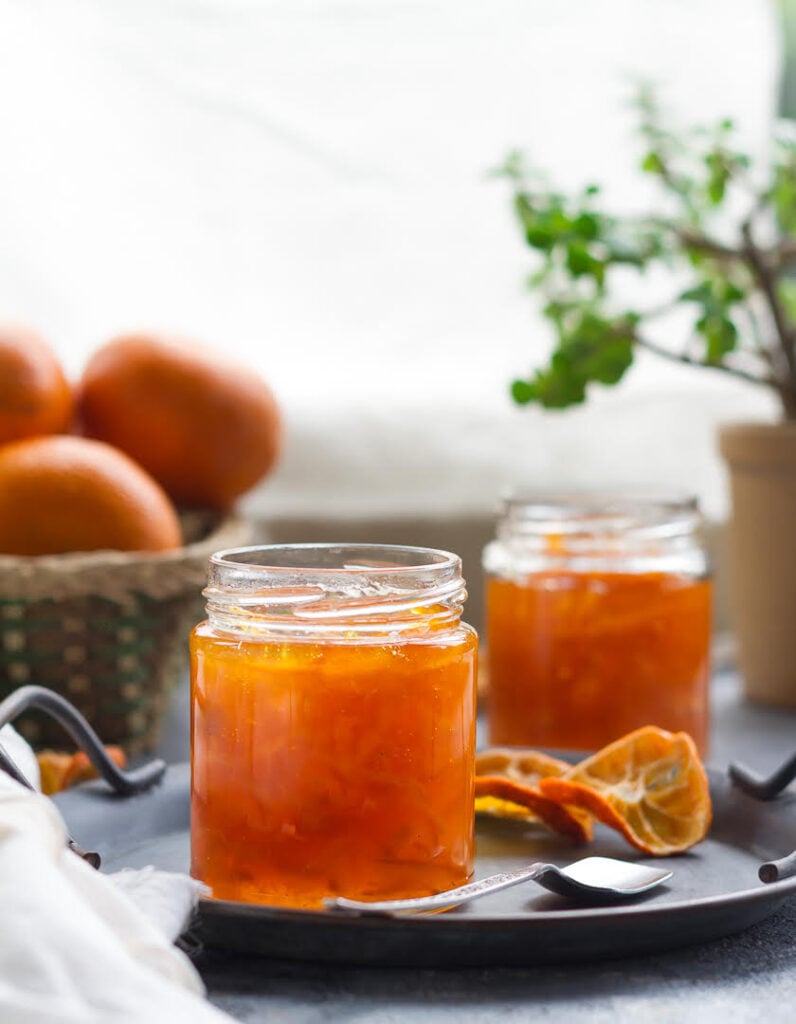
Variations of marmalade recipe
Any fresh citrus fruit you can get your hands on will do for the recipe – limes, lemons, oranges, or more.
How much sugar to put in marmalade?
The little bits of orange and ginger zest add character and body to the marmalade. It imparts a bitter undertone as well – the taste we prefer and enjoy.
That’s why I use less sugar than the traditional recipe, which is 1:1 – 1kg of sugar for 1kg of oranges.
I’ve used this method for a while now, and the result is excellent. Besides the cut-down sugar, that too raw sugar, makes it somewhat healthier.
FYI, you can stick to regular, white sugar.
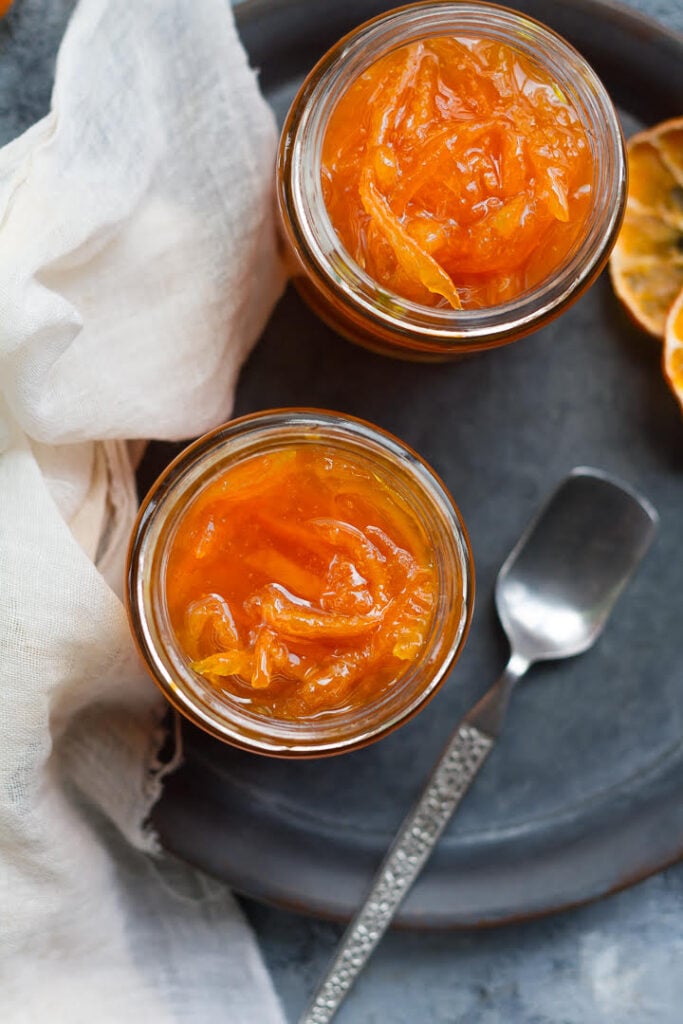
Serving the easy orange marmalade
One of the perks of cooking is using fresh, seasonal produce. It’s a joy to have marmalade bursting with bright citrus flavor.
I served it my favored way – slathered over toast with delicate slices of sharp cheddar cheese on top. It was like biting into the juiciest orange. It's amazing baked into a cake.
You can, of course, serve it with croissants, pancakes, muffins, or crepes. A tangy dollop of it on ice cream is a glorious way to relish orange marmalade. Or try a spoonful of it in any Asian curry.
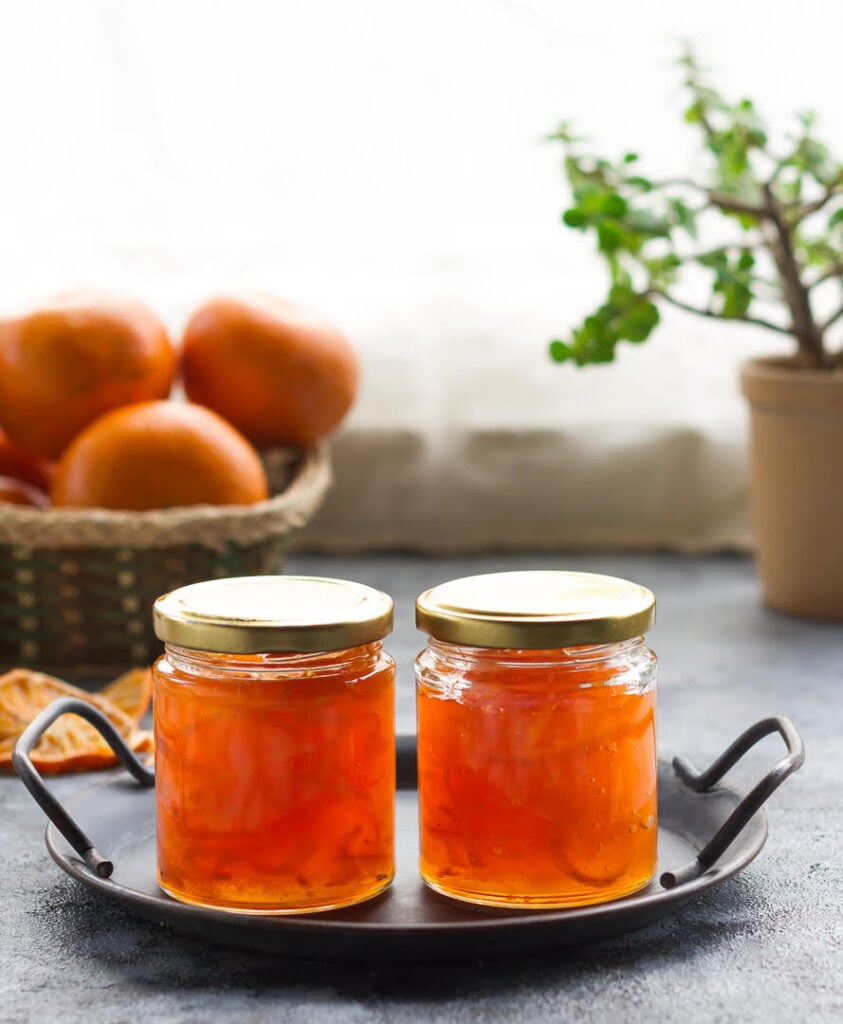
More Easy Fruit Jams
Half the joy of cooking is sharing it with others. That’s why I’m always eager to hear from you. So go right ahead and drop a comment or reach out on Instagram, Pinterest, YouTube, or Facebook. I hope you love this orange marmalade as much as we do!
📖 Recipe
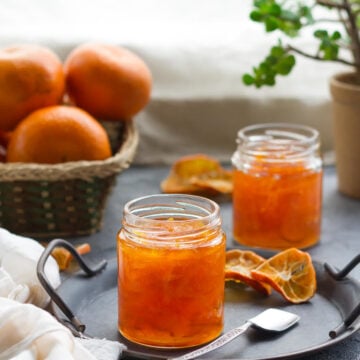
Easy Orange Marmalade
Ingredients
- 4 Oranges
- 1 1/4 cup Water
- 1 1/4 cup Raw sugar You can use regular white sugar
- 2 tsp Grated ginger Optional
Instructions
- Slice the oranges as thinly as possible. Cut into quarters.
- Take out all the seeds.
- Wherever the pith ( white part under the skin) is too thick, you can cut that off.
- Place a small bowl or plate in the freezer. This is for testing the jam.
- Place the oranges, with their juices into a saucepan.
- Add water, sugar, and ginger.
- Bring the mixture to a boil on medium heat. Once it boils, lower the heat to low.
- Cook for about 40 minutes, stirring occasionally. When the mixture starts to look thick, take it off the heat.
- Put a spoonful on the chilled plate or bowl. If the jam wrinkles up when you push it lightly with your finger or a spoon, your marmalade is ready. If not, put it back on heat for a few more minutes.
- Carefully spoon the marmalade in clean, sterilized jars. Seal tightly.
- This should last about 3 weeks in the refrigerator. Enjoy!
Nutrition
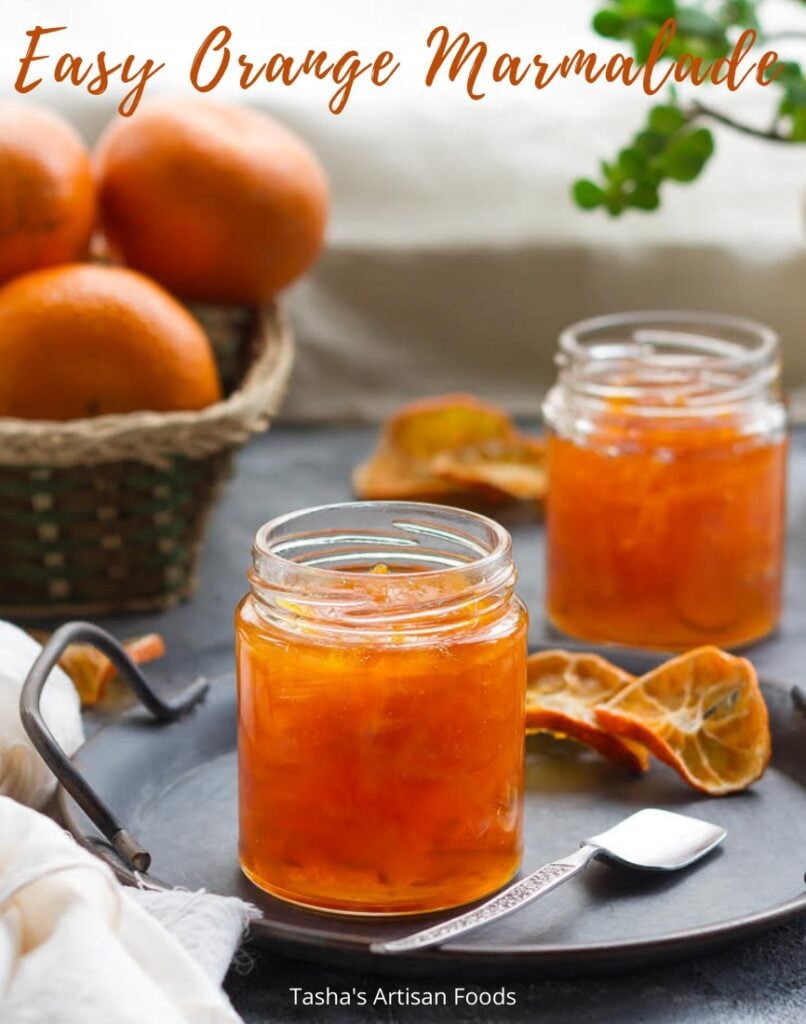

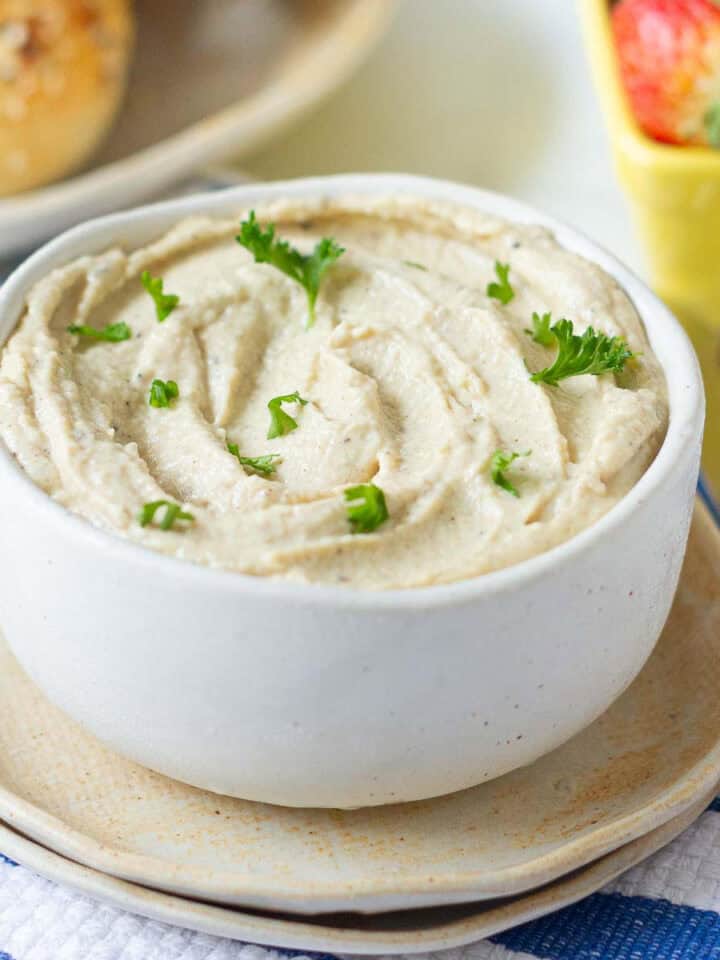



Debbie says
How long shelf life
Natasha Minocha says
This should last about 3 weeks in the refrigerator.
Sarah says
This sounds delicious! Does it last 3 weeks or 7-10 days? And is the three weeks in or out of the fridge? Thanks!
Natasha Minocha says
Thank you, Sarah! This will last upto 3 weeks in the refrigerator. I have updated this on the blog. Thank you for the heads up! Hope you enjoy it as much as we do. xx
Nancy Conklin says
Yes you can Can all jams and jellies. Using a water bath method, follow all instructions and process for 15 minutes(ia few have stated 10 minutes.) after boiling starts . Remove from the canner and let it sit until they pop and seal themselves.
Bernice says
Curious,can I do a canning method after all is done?
Natasha Minocha says
Hi Bernice, I believe you can. I don't know much about canning, time to learn.:)
Theresa Stefanick says
My mother used to make orange marmalade with marachino cherries in it. I cannot find a recipe for this. Can you tell me how I would add the cherries without ruining the marmalade?
This was a long time ago as I am 68. I do remember her saying the cherries were just for color.
Natasha Minocha says
Oh, maraschino cherries in the marmalade sound so lovely! I can imagine the pretty color. Unfortunately, I haven't ever made it that way. Though I'm totally curious about it now. I hope I can find it and then will definitely share it with you. Thank you so much for sharing your memory and for following along. xx
Karen says
Love this
It actually cooked quicker than stated time. Very sweet
Natasha Minocha says
So glad you enjoyed the recipe, Karen! xx
cathy p says
This was my first time making marmalade, was really easy and turned out great!
Natasha Minocha says
So happy to hear that, Cathy! Thank you so much. xx
Easyfoodsmith says
That looks perfect, Tasha! And you have managed to tempt me into making this 🙂
Natasha Minocha says
Oh please do! Its really an easy one 🙂